This year I finally made the drive down to Monument Valley to see what all the fuss is about. I’m not the biggest rock & desert fan, but I was “in the area” checking out the canyons and figured why not. Before I go on any weekend or longer trip, I also try to plan out contingencies, and Monument Valley was one of those planned contingencies that I knew I might visit. The real draw that brought me to the Valley that day was that I knew the shadow of the West Mitten would fall “perfectly” onto the East Mitten, creating a sort of symmetrical spectacle. With no clouds or weather in the forecast it was risky business. Here is what I came away with…
This image is a stitched panorama made from 13 individual images shot with a 70-200mm telephoto @ 70mm – f/11 – 1/8th sec – ISO 100. This shadow-casting is biannual, occurring at towards the end of March and the middle of September. Of course we don’t want to plan a whole trip with that sort of a rough timeframe – let’s take a look at how to plan this shoot down to the day/hour using a handy free program called The Photographer’s Ephemeris.
Locate the “Mittens”
Our first step is to find where these mittens are. If we search “Monument Valley” in the upper right of the app, we can get relatively close. That brings us to Oljato-Monument Valley, which is the nearby town close to the tribal park. Zoom out a touch, and you’ll see the tribal park to the East, by the state border. You should be able to see those mittens pretty clearly by cross-referencing with my image above. I’m glad to find they have re-imaged the satellite imagery for this area, as the mittens used to be obscured by a bit of fog.
To be a touch more precise, grab the red waypoint (which shall now be known as the red lollipop), and drop it onto the East Mitten. It is a click-and-drag sort of thing. We know our shoot will happen sometime in September, so in the upper left change the date to be September 1, 2014. Finally, zoom into that area to include only the two mitten landmarks. Now our map looks something like this…
Find The Correct Date
Super. Let’s talk a little bit about those colored lines, for they are central to our cause. The darker orange line shows the sun position at sunset, while the yellowish line shows the sun position at sunrise. In the image below, the sun position at a specific time is shown by the thinner orange-yellow line. The blueish lines are similar, indicating moon position both at a given time, and at moonrise. Notice how these colors coordinate with the colors in the boxes at the bottom of this screen grab, which indicate important times of day with respect to celestial bodies.
At the bottom of the Photographer’s Ephemeris window there is a slider and a graph. This section shows the hours of each individual day in meaningful detail, including the sun and moon azimuth and apparent elevation. By moving the slider from right to left we can see the azimuth of the sun and moon change throughout the day. The graph below also shows the altitude of the sun and moon throughout the day.
To find the optimal date for our mitten shadow photograph we can progress through the month by clicking on the arrows near the date above the upper left corner of the map. To achieve the perfect shadow we need to have the azimuth of the sun at sunset (dark orange line) go through both the East and West Mittens. Notice that on September 1 2014 the sunset azimuth is above where we need it to be. As we click through the days of the month, the azimuth moves closer and closer to our imaginary line that connects the two Mittens.
I found that on September 13th the sunset azimuth is perfectly through the middle of the West Mitten, with the red lollipop centered on the East Mitten. From the sunset box at the bottom of the map I can see that this is at 274.9°. Check out the screengrab below…
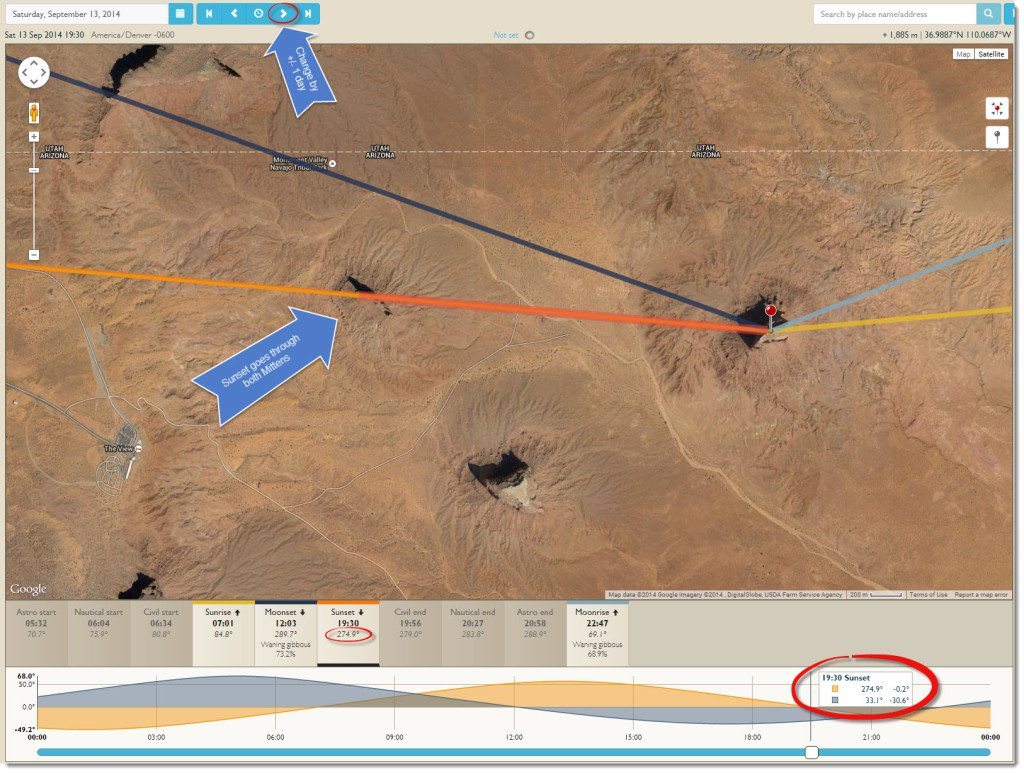 According to the map, September 13th looks like an optimal shadow with an azimuth of 274.9°. Take a second to check out the 12th and the 14th, and notice that the azimuth is 275.4° and 274.5°, respectively. I think that those azimuths would work just fine as well, and knowing that is useful to allow for a “shadow window” should there be weather interferes with the shadow.
According to the map, September 13th looks like an optimal shadow with an azimuth of 274.9°. Take a second to check out the 12th and the 14th, and notice that the azimuth is 275.4° and 274.5°, respectively. I think that those azimuths would work just fine as well, and knowing that is useful to allow for a “shadow window” should there be weather interferes with the shadow.
Finding the Correct Time
Watching the sunset line for an intersection between East and West Mitten is the most common sense way to determine when the shadow of the West Mitten would fall on the East Mitten at sunset. Wouldn’t it be nice if we could see a better visualization of that shadow? At what time will the shadow be aligned with the mitten, and will the sun be down far enough and the shadow long enough to hit the East Mitten? Move the red lollipop to the center of the West Mitten. Hold down shift and drag the slider at the bottom of the Photographer’s Ephemeris window. A circle is drawn around your red lollipop and you will notice a dark line that swings across the map.
I can see that the shadow starts to reach the East Mitten around 7:05 PM on Saturday, September 13, 2014. The shadow becomes centered on the East Mitten around 7:25 PM, and lasts until 7:30 PM, which is when the sun sets.
Using this shadow method you can do further analysis and see that other dates, as early as September 10th, should have a shadow falling onto the East Mitten. However, the shadow will occur farther from actual sunset. In the case of September 10th, the shadow looks to be aligned for only 4 minutes, from 7:20 PM to 7:24 PM, while the sun doesn’t set until 7:34 PM. Thus the lighting will be different, but I imagine it would also make for a great image.
My Image
If you were wondering, my panoramic image (a series of 13 photographs) was taken between 7:22:30 PM and 7:23:22 PM on September 12th, 2014. I felt shadow had really lined up optimally at that time, and it was still very clearly defined, which can be a concern because as actual sunset approaches the sharpness of that shadow starts to degrade until the light is just completely diffused. Here is that keeper image again:
For giggles, here is a similar image taken at about 7:19 PM on that same night. You can see how the shadow isn’t quite optimally aligned.
At 7:25 PM I took the following image, which shows the shadow starting to diffuse…
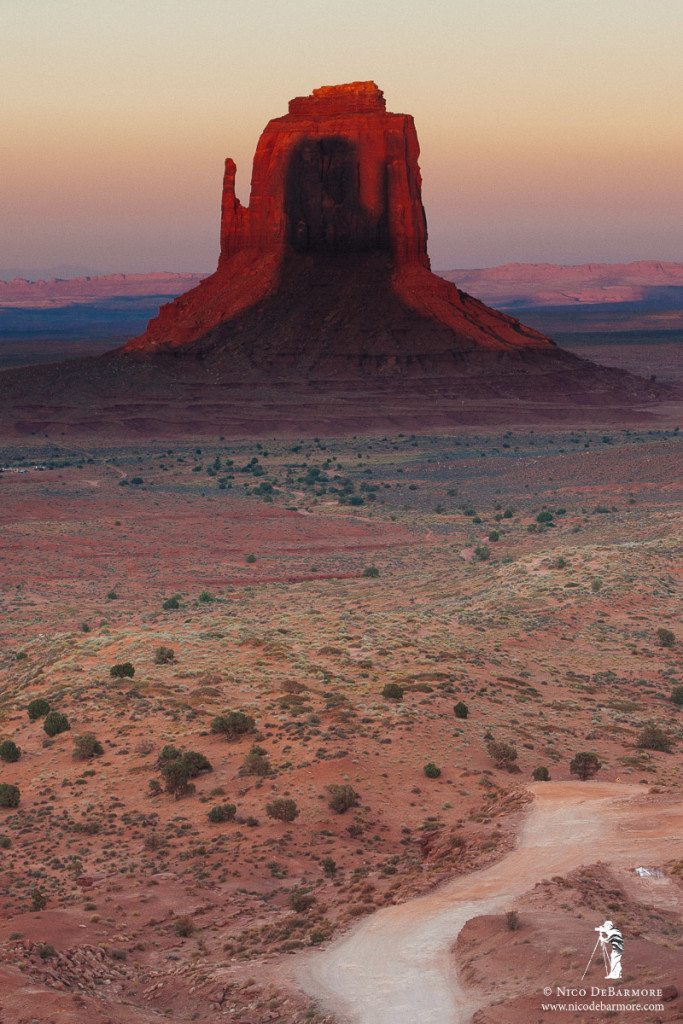 Finally, here is an image from 7:29 PM, at which point the shadow was completely gone.
Finally, here is an image from 7:29 PM, at which point the shadow was completely gone.


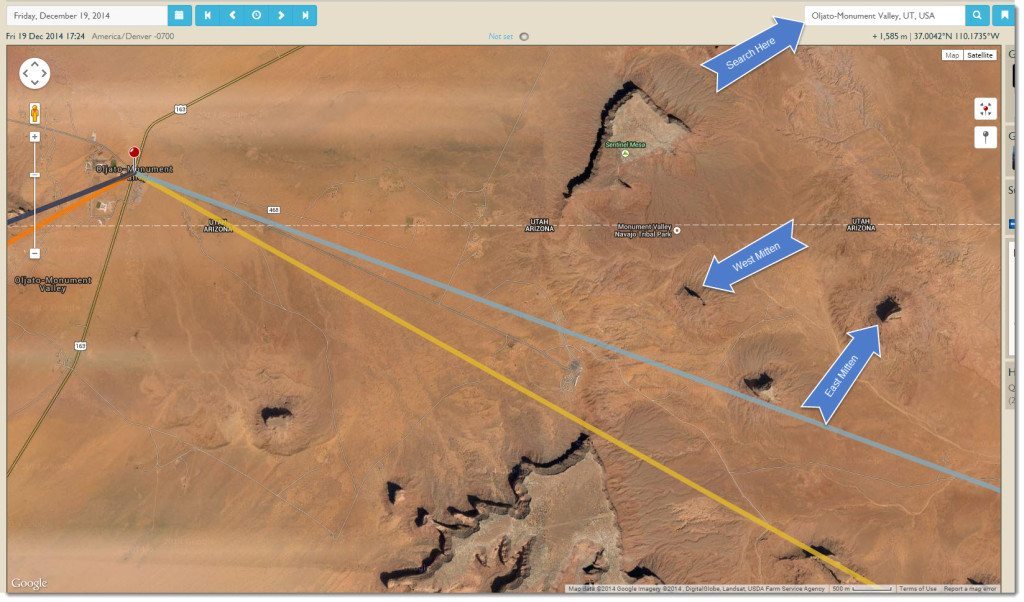
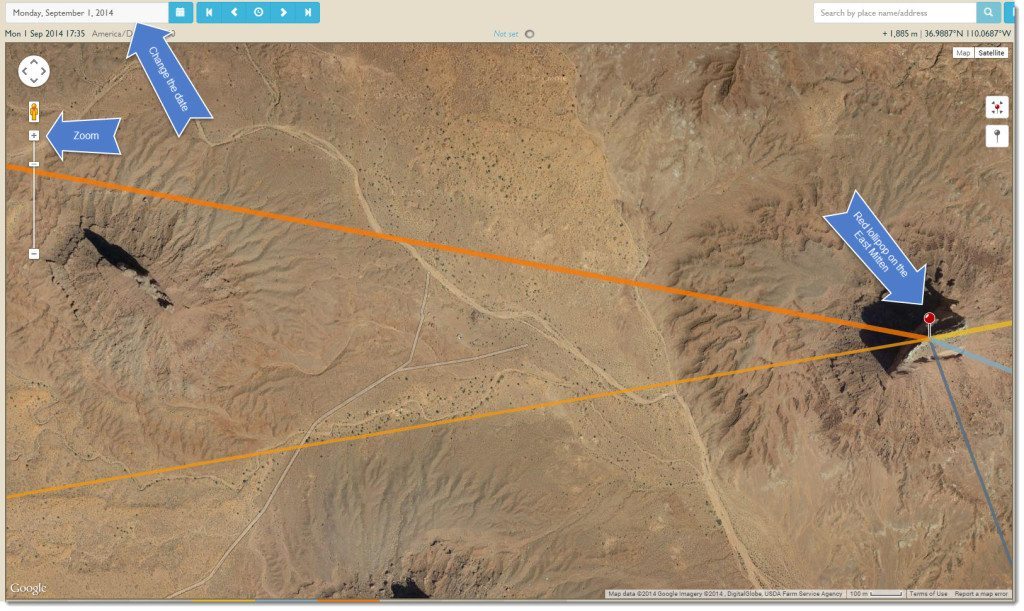
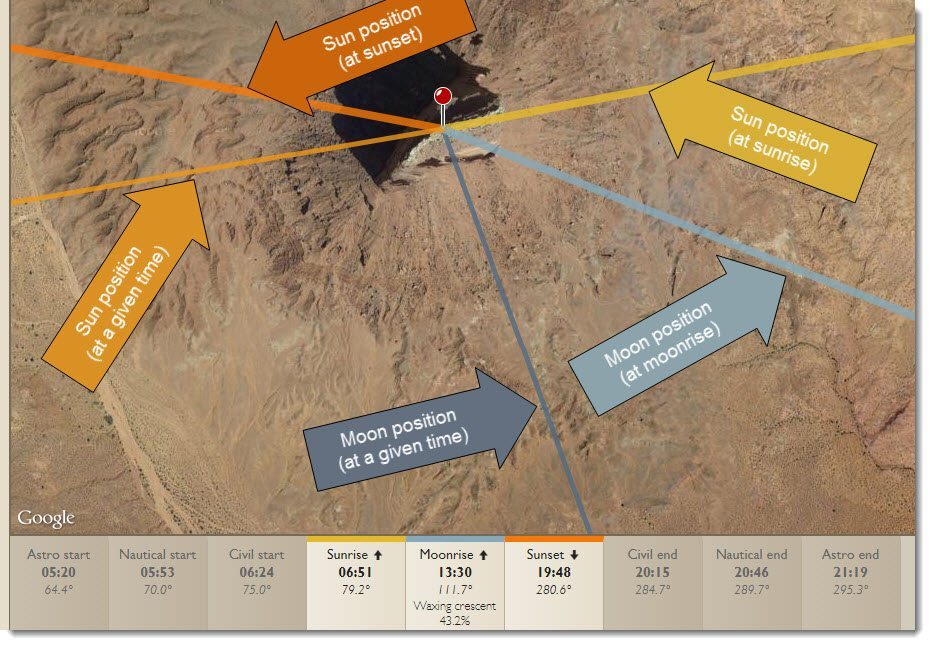
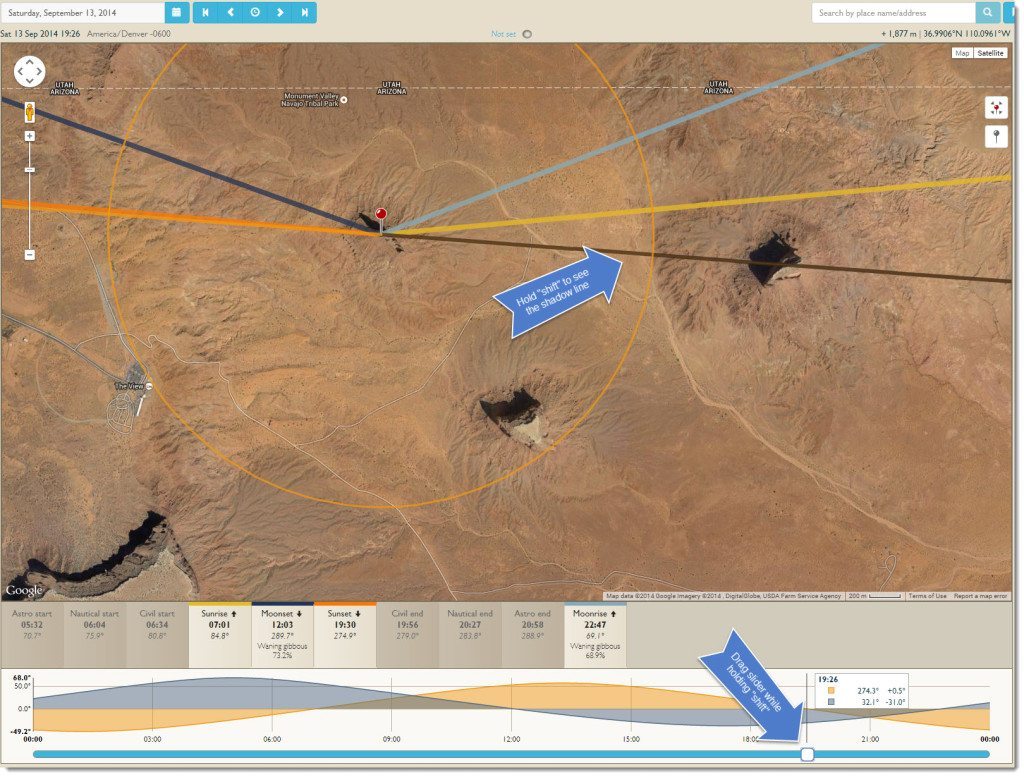

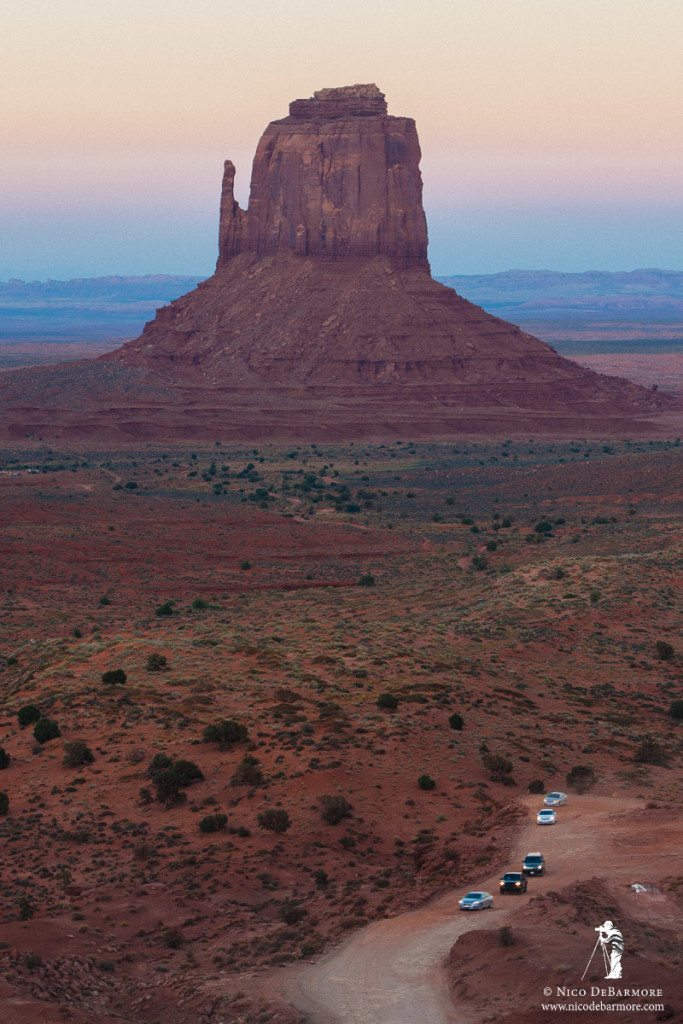

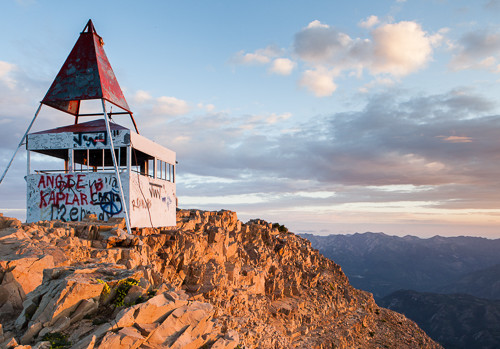
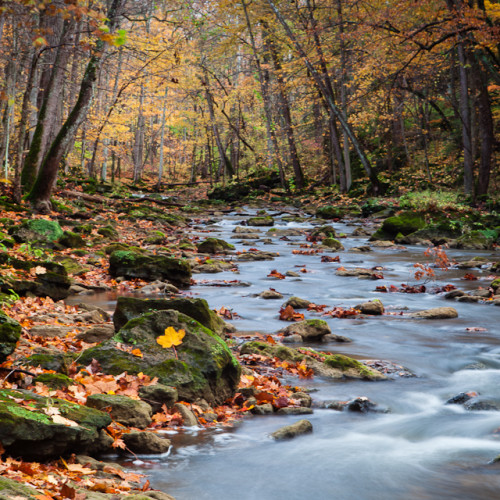

Leave a reply